Using probability distribution function as a scaling approach to incorporate soil heterogeneity into biogeochemical models for greenhouse gas predictions
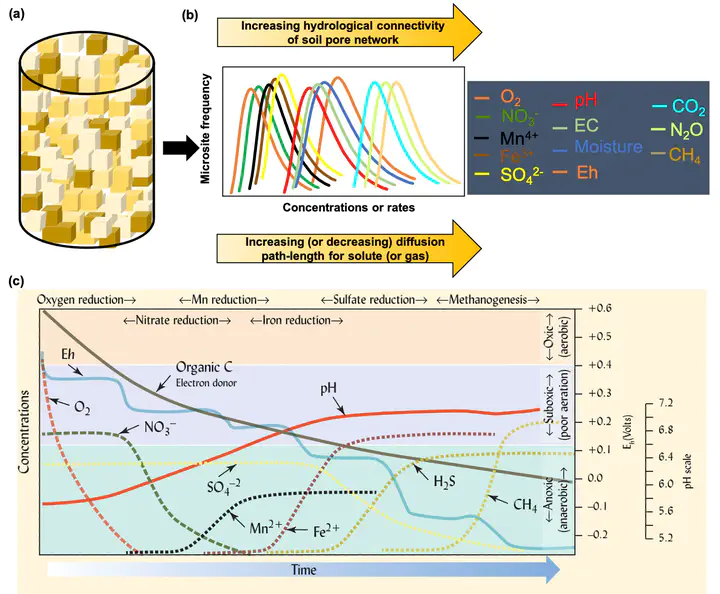
PI: Debjani Sihi
Co-PI(s): Jianqiu Zheng, Pacific Northwest National Laboratory and Eric A Davidson, University of Maryland Center for Environmental Science Appalachian Laboratory
Collaborator: Patrick Megonigal, Smithsonian Environmental Research Center and Michael Weintraub, University of Toledo
Total Funding: $300,000
Brief description of the project:
The Terrestrial Aquatic Interfaces (TAIs) with dynamic hydrological exchange represent the most biogeochemically active and diverse systems. Frequent hydrological oscillations due to tidal inundations and storm surges regulate oxidation-reduction(redox)-driven biogeochemical transformations and fluxes of carbon and nutrients across TAIs. Soil microsites, the most biogeochemically active soil components, further complicate such hydrological dynamic-driven redox biogeochemistry by creating spatial heterogeneity and variations in reaction kinetics. The functional forms of the interactions among water, carbon, and redox-sensitive compounds may differ at microsite-, plot- and ecosystem scales. How microsite-scale processes manifest into pilot-scale and ecosystem-scale functions will control the long-term dynamics of GHGs in these dynamic interfaces. These complex interconnected processes across TAIs are underrepresented in current ecosystem and Earth system models because we lack a dynamic modeling framework that (1) captures the heterogeneity of soil microsites driving non-normal distribution of microbial activities and (2) integrates interconnected processes across scales.
We are incorporating probability distributions of redox processes at soil microsites using a coupled modeling-experimental (ModEx) approach.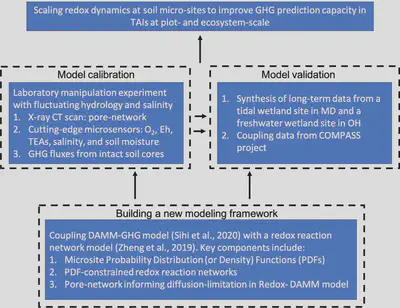
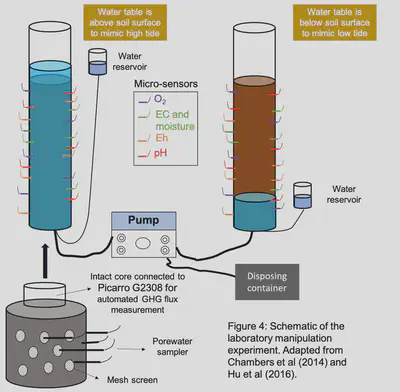
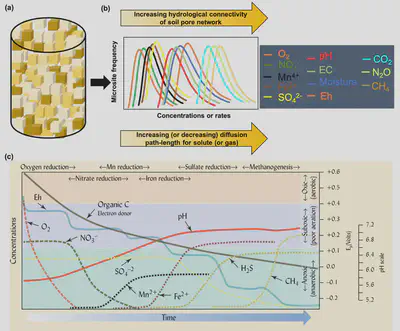
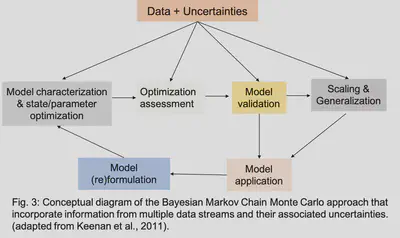
Related Presentation:
Sihi, D., Zheng, J., Wang, Z.*, Davidson, E., Megonigal, P., Weintraub, M., and Duckett, M.# Developing a probabilistic framework to capture redox heterogeneity and greenhouse gas predictions in Terrestrial-Aquatic Interfaces. DOE ESS PI Meeting, May 24-26, 2022 (Virtual).
Duckett, M.# and Sihi, D. Evaluating Spatiotemporal Soil Microbial Ecology to Understand Greenhouse Gas Emissions in Terrestrial Aquatic Interfaces In the 9th Annual Southeastern Biogeochemistry Symposium, Atlanta, GA, Apr31-May 1, 2022.
* post-doctoral trainee # graduate student